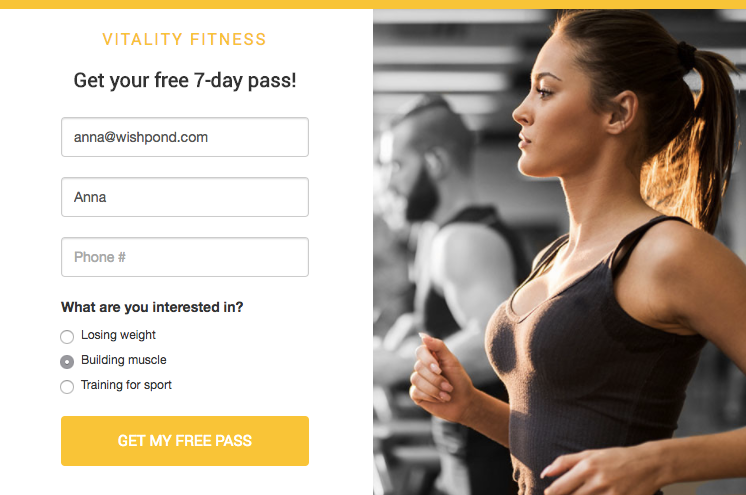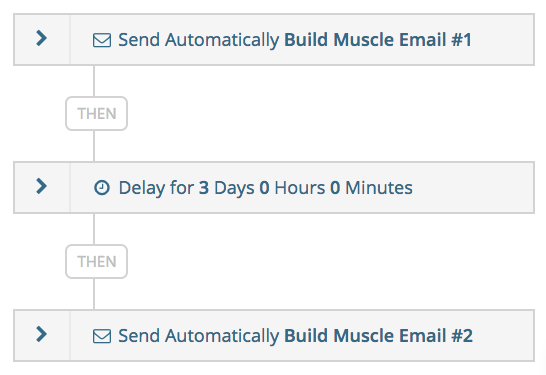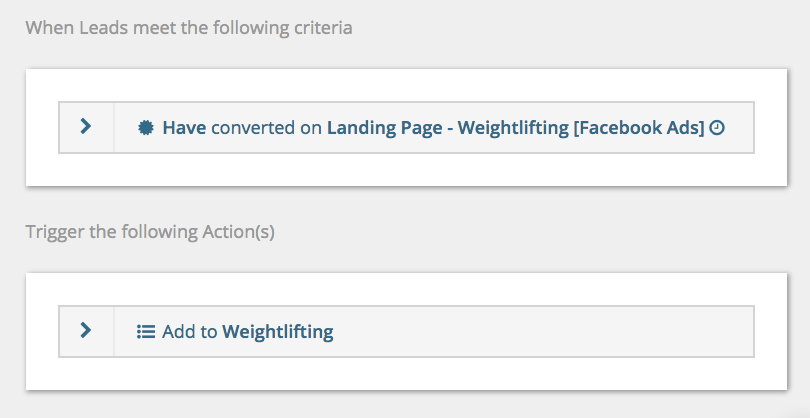The Complete Guide to Lead Segmentation for Fitness Centers
Chances are, there’s a few types of people within the target market of your fitness center.
Even though you have a general idea of who your customers are, there’s bound to be small subsections within them: men, women, people who want to build muscle, people who want to burn fat, people who want to take spinning classes, people who want to do yoga… the possibilities are endless!
When it comes lead nurturing, you could send a series of general emails to all of these people in the hopes that they’ll convert. But these emails don’t take into account that your database of leads isn’t homogenous – like I mentioned, it’s made up of a wide variety of people with different interests.
That’s where lead segmentation comes in.
What is lead segmentation?
Unlike un-segmented marketing, segmentation allows you to organize your leads based on a number of different factors. This allows you to market to them on a more personal level by sending them marketing communications that are relevant to their specific interests.
More specifically, market segmentation is “the act of subdividing your market or contacts into groups with similar characteristics, needs, or interests who are likely to exhibit similar purchase behaviour.”
Market segmentation is the simple shortcut to increased engagement from your leads – that means email open rates, click-throughs, and of course, conversions. You’ll need to spend a little time getting your segmentation strategy down, but trust me, it’s worth it.
Why is lead segmentation effective?
Lead segmentation is effective because it allows you to better understand your leads, which drastically affects your ability to communicate with them on a more targeted level. This directly affects your lead nurturing strategy, as it allows you to write emails or create content that’s specific to the interests, beliefs, and attitudes of your customers.
For example, you could separate your leads into people who are interested in weightlifting, people who are interested in cardio, and people who are interested in yoga. Instead of running an email drip campaign that touches a little on each of these topics to all of these people, you could send only weightlifting content to your weightlifting segment.
This increases the relevance of your communications, and shows leads that you care about their personal goals and interests, increasing the chance that they’ll become a member.
If you’re looking for proof that segmentation works, check this out. MailChimp recently did a study where they looked into about 2,000 users who utilized lead segmentation on their platform. Compared to un-segmented campaigns, segmented email drip campaigns had a 15% higher open rate, a 3% lower bounce rate, and an astonishing 94% higher click-through rate.
If you want to get more members for your gym from the leads you’re generating, lead segmentation is a no-brainer.
What makes a strong segment?
If you want to get the most out of your lead segmentation strategies, you’ll want to follow these rules when segmenting.
Your segments need to be:
- Sizeable: You won’t reap any benefits of segmentation by segmenting way too specifically. Make sure each of your segments makes up a big chunk of your target market.
- Distinguishable: Make sure each of your segments is clearly defined. You should expect your segments to react differently to different marketing strategies (otherwise it’s not worth segmenting them at all).
- Relevant: The way you segment customers should affect your business directly. Segmenting leads by fitness goal? Makes sense. Segmenting them by favourite ice cream flavor? …Maybe not so much.
- Actionable: You need to be able to build marketing initiatives that target and act on the characteristics of your segment.
- Stable: It’s not worth spending time (and money) targeting a segment that may dissolve or drastically decrease in size in the short-term. Make sure your segments have longevity.
Let me guess – you’re asking “how does it work, and how do I do it?”
Well, lucky for you, I’m a bit of a mind reader.
How lead segmentation works
Before we begin, make sure you have access to a platform with built-in segmentation tools, such as Wishpond or MailChimp.
There are two main types of lead segmentation: explicit and implied.
Explicit segmentation refers to segmenting leads based on properties that are given to your business by leads through channels like lead generation forms, purchase behaviour, or simple discussion.
Examples of this include:
- Leads who said they were interested in losing weight on your popup
- Customers who signed up for a membership in the last two months
Conversely, implied segmentation is the practice of segmenting leads through actions, demographics, or purchase behaviour.
Examples include:
- Leads who converted on a weightlifting-related landing page are probably interested in weightlifting
- Customers who purchased a yoga mat from your gym’s store are likely interested in doing yoga
Remember that segmentation is never 100% accurate – for example, some people on your “weight loss” list might also have other fitness goals such as getting stronger, or that person who bought a yoga mat from your store may just be using it to stretch before lifting weights.
Here’s a simple breakdown of lead segmentation.
First, you need a lead – which you can collect from a number of lead generation strategies, including contests, popups, and landing pages.
Once you’ve collected the lead, you’ll use information generated from their responses to your forms or the activity they take on your site to group them into a specific segment, like “yoga” or “purchased membership within last 2 months”.
Once you’ve categorized a lead, you can nurture them with a drip campaign that’s specific to their segment; for example, a drip campaign with yoga content or a “new member” drip. These can be used to turn leads into sales or onboard new customers – lead segmentation isn’t only useful for getting more members!
Let’s take a look at examples for explicit and implied segmentation – I’ll walk you through each step.
Explicit Segmentation
Explicit segmentation usually starts with a lead generation form of some sort. With explicit segmentation, you’ll usually want to determine your segments beforehand so you can get the relevant information from your leads.
In this case, I’ll use my fictional fitness center, Vitality Fitness. I’ve created a popup for our webpage that offers visitors a free 7-day pass as an incentive to give Vitality a try.

Here, we have a lead named Anna. She’s interested in toning up, so she selects “building muscle” when she fills out our form to claim her pass. This is where the segmentation begins.
By filling out my form, Anna now has a “goal” Lead Property of “building muscle”. I can now send specific campaigns with content based around that goal to her. Let me show you…
I’ve created a workflow in Wishpond to run an email drip to leads who are interested in building muscle. I’m targeting everyone with the “goal” lead property of “building muscle”. By attaching this lead property to all of my campaigns that revolve around building muscle (through a form or hidden field), I can send emails to these people that are specifically relevant to their goal of building muscle.

As you can see, I’m going to start an email drip that begins with an email, a delay, and then another email – all to do with building muscle. Customers who read these emails will see that they contain content relevant to their goals, which makes them much more engaging than any “general” emails I may have sent out otherwise (more on this in our chapter on email drip campaigns).

You can do a ton of things with their activities, based on whether or not they’ve opened your emails, clicked through them, and more. There’s an endless number of possibilities in terms of things you can do to nurture your leads and turn them into members for your fitness center.
Pretty straightforward, right? Let’s move on to the next type of segmentation…
Implied Segmentation
This one is a little more exciting, as it takes a little bit of inference. Though of course lead generation tools are present in implied segmentation, they don’t serve quite as straightforward a role in the segmentation process.
Here’s an example, again using my favorite fictional fitness center.
Vitality Fitness offers a multitude of fitness services, including a weight room, yoga studio, and group fitness classes. Because of this, we run a variety of Facebook Ads targeted to different people, and have created segments for leads who might be interested in the different services we offer.
Traffic from these Facebook Ads directs visitors to landing pages based on the ad they clicked – in this case, our trusty hypothetical lead Anna clicks through on a weightlifting-themed landing page.
She converts on this page, and this workflow triggers:

Anna is then added to my “Weightlifting” list, and she can now be marketed to with email drip campaigns that are specific to weightlifting (alternatively, I could set her “interest” lead property to “weightlifting”).
As you can see, setting up implied segmentation is very simple as far as marketing automation goes. It’s more about the way you decide to divvy your customers. You want to make sure you’re segmenting them in such a way that makes sense, without making inaccurate conclusions.
For example, you probably wouldn’t want to assume someone who converts on a piece of content about “the importance of stretching” is only interested in yoga. This person could also be interested in stretching to help achieve their running or weightlifting goals.
Conclusion
There you have it – a quick and easy guide to get you started with lead segmentation. When it comes down to it, there’s a lot of nuances to lead segmentation – but one thing is for certain: it’s an extremely powerful tool when it comes to increasing the impact of your marketing and lead nurturing strategies.
Even if you’re a small business, I’d recommend starting right away. Build a foundation for your lead segmentation and test different things to see what works (and what doesn’t).
As you continue to grow, you’ll find lead segmentation allows you to better co